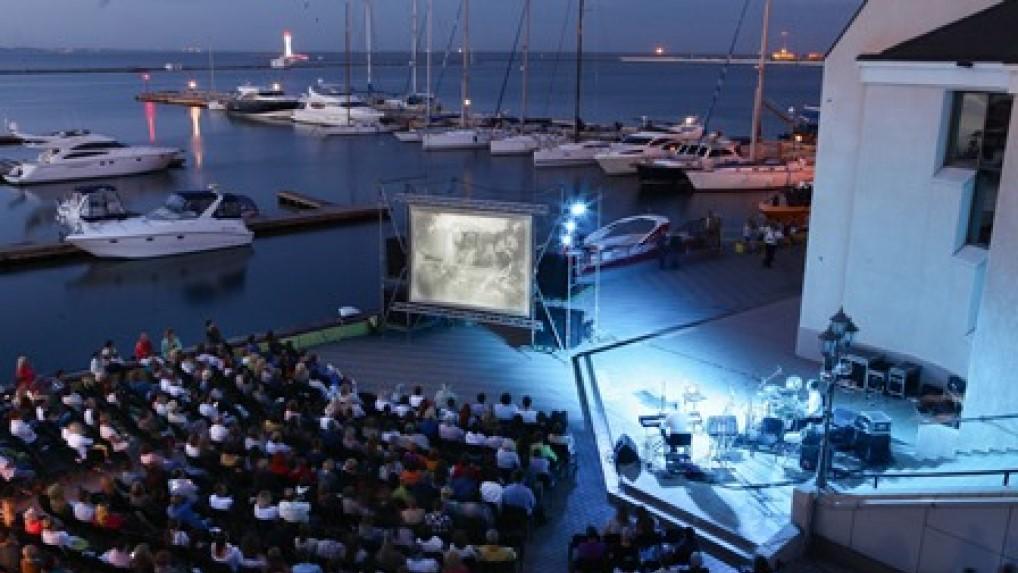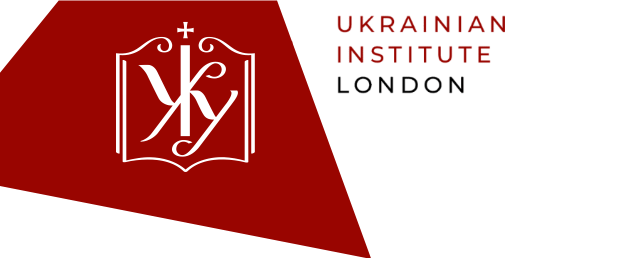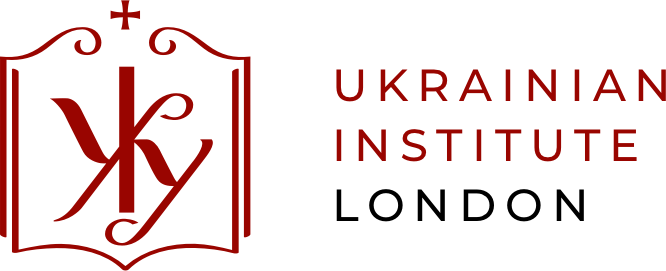An article by Ukrainian Institute London’s Director Marina Pesenti published in The World Today April & May 2018 (Chatham House).

AUTHOR
Marina Pesenti, Director, Ukrainian Institute London.
‘This queue is a pleasure to watch,’ said Ukrainian President Petro Poroshenko as he made his way through the crowds at the International Arsenal Book Festival in Kyiv in May last year. Some 50,000 people visited the fair, 150 publishing houses displayed their works and hundreds of events were held under the vaulted ceiling of a huge Tsarist-era arms factory that is now one of Ukraine’s leading museums.
The festival is part of a cultural explosion in Ukraine which embraces cinema, theatre, literature and publishing, documentary making, contemporary arts and fashion.
It is this vibrancy in Ukraine’s cultural scene that prompted Vladislav Davidzon, a New-Yorker of mixed Jewish-Russian parentage, to come to Ukraine and set up its first cultural journal, The Odessa Review. ‘I’m really attracted to the cosmopolitan aspect of contemporary Ukrainian culture where everyone is bilingual and everyone is starting to learn English,’ he says.
Just like the book fair, The Odessa Review is on a mission to promote the intellectual and artistic renaissance prompted by the tumultuous events that have swept Ukraine in recent years − the ‘Revolution of Dignity’ on Kyiv’s main square in 2013-14, the Russian annexation of Crimea and the Moscow-backed war in the east. These have fed a nationwide debate about Ukrainian identity and the cultural markers that come with it.
Two views on identity collide here. The conservative nationalist camp talks of glory, heroes and Ukraine’s liberation struggle, past and present, including the war in the east of the country. Films, books, exhibitions, both state-sponsored and grassroots-based, boost Ukrainians’ patriotic spirit. One of the recent releases, Kiborhy (The Cyborgs), about the Ukrainian defenders of Donetsk airport, set a record at the box office of 22 million hryvnas (£600,000).
All over the country Lenin monuments have been toppled, first as part of a spontaneous movement and later supported by state policies of ‘de-communization.’ These include a ban on Soviet symbols, the return of historic names to streets and towns and the removing of Soviet-era mosaics. So far, 1,320 Lenin statues have been taken down in Ukraine.
The right-wing cultural conservatism is opposed by the ‘liberal’ camp. It is no less patriotic, but ‘it is civic nationalism, not of an ethnic kind’, Davidzon says. ‘Liberals’ promote a more inclusive view of Ukrainian identity, a more nuanced approach to history and a conservationist approach to Soviet material culture. They ask some searching questions: should Ukraine glorify the Second World War nationalist organizations whose members took part in anti-Jewish pogroms in Nazi-occupied Ukraine? Should we denounce Russian, which many Ukrainians consider their mother tongue, as ‘the language of the aggressor’? Should we deface Soviet mosaics, some of which have real artistic value? A debate, in public space and in social media, rages on.
‘In our cultural policies, there’s this mélange: conservatives versus liberals who are now managing budding cultural institutions according to new standards. There’s no clear sense of direction,’ says Olesya Ostrovska-Lyuta, director of the Mystetskyi Arsenal, as the Kyiv cultural complex is known.
What is clear, however, is the huge amount of energy exerted by Ukraine’s artists, curators and public intellectuals as they frantically seek to rediscover a lost cultural heritage which is little known to Ukrainians themselves, let alone foreigners.
What is clear, however, is the huge amount of energy exerted by Ukraine’s artists, curators and public intellectuals as they frantically seek to rediscover a lost cultural heritage which is little known to Ukrainians themselves, let alone foreigners.
One of the Mystetskyi Arsenal’s latest ventures was a hugely popular display of avant-garde art from the 1920s known as the Boychukist style, after the Boychuk brothers. It flourished in the decade after the Bolshevik revolution when Moscow tolerated Ukrainian cultural expression but was tragically wiped out during Stalin’s terror. This style had a major influence on generations of Ukrainian artists but has never been shown in a major exhibition.
Ukraine’s largest cinematheque, the National Dovzhenko Centre, named after the film director Oleksandr Dovzhenko, lifted from obscurity a number of the 1920s and 1930s silent films and has given them a second lease of life by commissioning a soundtrack written by contemporary composers. The films are all the rage with the hipster crowds in Kyiv and the Black Sea port of Odessa where the centre has annual outdoor gigs.
‘The lion’s share of Ukrainian cultural heritage is in Russia. All artwork used to be accumulated there and only some part of it has trickled back. This resulted in entire cultural layers being taken out of their original context. Subsequent generations in Ukraine had no cultural memory of them whatsoever,’ says Ivan Kozlenko, director of the Dovzhenko Centre. ‘We have become a post-colonial nation. We have to build our own image of who we are.’
The boundaries of what constitutes national cultural treasure are shifting.
The boundaries of what constitutes national cultural treasure are shifting. For centuries Ukraine has been contested by empires in which diverse ethnic communities − Ukrainians, Russians, Poles, Jews, Greeks, Crimean Tatars − lived side by side. Many are determined to cultivate this cultural mosaic, not brush it aside in the name of Ukrainian nationalism. In Lviv, close to the Polish border, local intellectuals admire the poetry of Debora Vogel, a pre-war Yiddish writer, virtually unknown to most Ukrainians, now lovingly translated.
In Odessa, another city with a rich cultural tradition, hundreds gathered for a flash mob by the Opera House to hear extracts read aloud from the work of Isaac Babel, whose Odessa Tales chronicle the Jewish gangsters who held sway over the city in the 1920s. Babel died in Stalin’s purges in 1940.
In Kyiv, the rebranding of Kazimir Malevich, an abstract artist firmly embedded into Russian cultural narrative, is underway. Malevich, a Pole born in Kyiv, who attended a local art school and lectured at the Kyiv Art Academy, should be marked as ‘a Ukrainian-Russian artist of Polish descent’, says Tetyana Filevska, an author and organizer of an international conference on Malevich in the Ukrainian capital.
Ukraine’s biggest cultural challenge lies in the east of the country
But Ukraine’s biggest cultural challenge lies in the east of the country where the war with local Russian-backed separatists has already claimed 10,000 lives and is still raging. A cultural divide between the Donbas − as the heartland of Ukraine’s coal and steel industries is known − and the rest of Ukraine is a topic endlessly chewed over in people’s kitchens, on television and at literary festivals. For decades Donbas was a near desert for Ukrainian culture, with Russian pop music and football being the preferred pastimes.
While Donetsk and Luhansk, the biggest cities of the region, are still separatist-controlled, a string of smaller industrial towns on the Ukrainian side of the conflict have suddenly become a focus of a ‘cultural onslaught’: writers, singers, publishers, filmmakers and actors from all over Ukraine organize pop-up art galleries, stage public readings of books and produce experimental theatre plays with displaced people from the separatist areas as actors. Most of these initiatives are from the grassroots and have no state support.
This powerful push from the public has stimulated the government to start changing its highly centralized approach towards cultural policies. Here, little has changed from Soviet times: the legislative field for Ukraine’s arts and culture is highly prescriptive, stifling creativity, making partnerships with the private sector difficult, says Ostrovska-Lyuta. But things are slowly changing.
The first steps in promoting Ukraine’s image and brand abroad are being made. In 2015, Ukraine’s Ministry of Foreign Affairs opened a new department for public diplomacy and is making plans for a network of Ukrainian cultural institutes abroad. It is expected that the first branches will be launched in Paris, Berlin and Warsaw in 2018. Ukraine’s culture enthusiasts and its massive diaspora abroad are holding their breath.
This article was published by Chatham House in The World Today April & May 2018.


